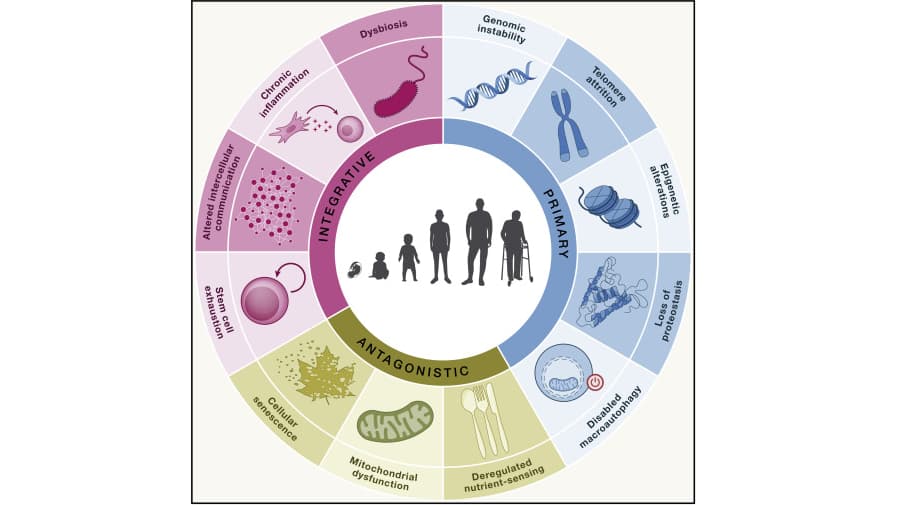The 12 Hallmarks of Aging: Insights from Modern Science
Aging is an inevitable biological process, but modern science is gradually uncovering its mysteries. In 2013, López-Otín and his team published a groundbreaking paper in the journal Cell, which identified nine key hallmarks of aging. Since then, further research has expanded this framework to include 12 hallmarks, providing a comprehensive guide to understanding the mechanisms of aging and potential interventions.
Here’s a detailed look at these 12 hallmarks of aging:
1. Genomic Instability
Our DNA is constantly exposed to damage from environmental factors like UV rays, chemicals, and free radicals. If this damage isn’t repaired, it can lead to gene mutations, cellular dysfunction, and disease.
2. Telomere Attrition
Telomeres are protective caps at the ends of chromosomes, and they shorten every time a cell divides. When they become too short, cells stop dividing and enter a state of aging.
3. Epigenetic Alterations
Epigenetic mechanisms, such as DNA methylation and histone modifications, regulate gene expression. During aging, these regulatory systems become disrupted, leading to gene dysfunction.
4. Loss of Proteostasis
Healthy cells rely on precise protein production and degradation. Aging disrupts this balance, causing misfolded or damaged proteins to accumulate, which can be toxic to cells.
5. Mitochondrial Dysfunction
Mitochondria are the powerhouses of cells, generating energy. However, their function declines with age, reducing energy production and increasing free radical generation, which accelerates aging.
6. Stem Cell Exhaustion
Stem cells are responsible for tissue repair and regeneration. As we age, their numbers and functionality decline, reducing the body’s ability to renew itself.
7. Cellular Senescence
Cellular senescence occurs when cells stop dividing but remain metabolically active, secreting inflammatory factors that contribute to chronic inflammation and aging of surrounding tissues.
8. Dysregulated Nutrient Sensing
Metabolic pathways, such as insulin, IGF-1, and mTOR signaling, regulate energy and nutrient balance. With aging, these pathways become dysregulated, increasing the risk of metabolic diseases.
9. Altered Intercellular Communication
Cells rely on signaling to work together, but aging disrupts this communication system, leading to increased chronic low-grade inflammation.
10. Changes in the Extracellular Matrix
The extracellular matrix provides structural support to cells. As we age, its composition and functionality change, leading to visible effects like skin sagging and decreased bone density.
11. Loss of Heterochromatin
Heterochromatin plays a critical role in maintaining genomic stability. During aging, its reduction leads to abnormal gene expression and chromosomal instability.
12. Immune Aging (Immunosenescence)
The immune system becomes less effective with age, making the body more susceptible to infections and chronic diseases. It may also mistakenly attack the body’s own cells, increasing the risk of autoimmune conditions.
The Significance of the 12 Hallmarks of Aging
These hallmarks not only help scientists understand the biological basis of aging but also provide valuable targets for interventions. For example, strategies like enhancing mitochondrial function, protecting telomere length, and repairing DNA damage show promise in slowing the aging process.
Research into these hallmarks is ongoing, bringing us closer to the goal of extending healthy lifespan. These discoveries highlight the importance of scientific approaches in understanding and mitigating the effects of aging.
Reference: López-Otín C, Blasco MA, Partridge L, Serrano M, Kroemer G. Hallmarks of aging: An expanding universe. Cell. 2023 Jan 19;186(2):243-278. doi: 10.1016/j.cell.2022.11.001. Epub 2023 Jan 3. PMID: 36599349.

